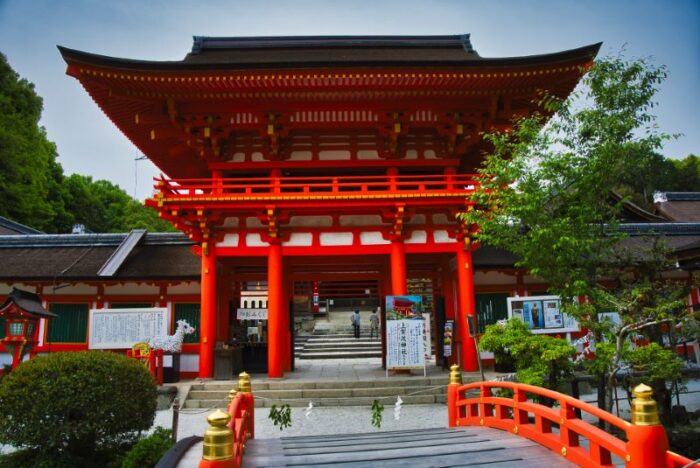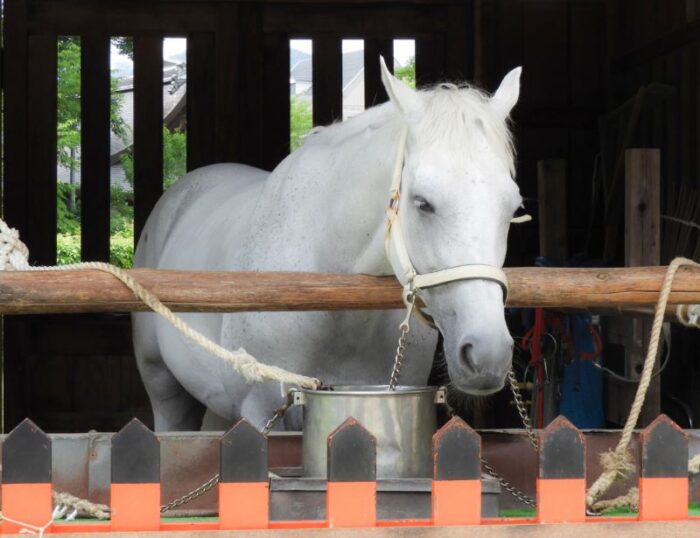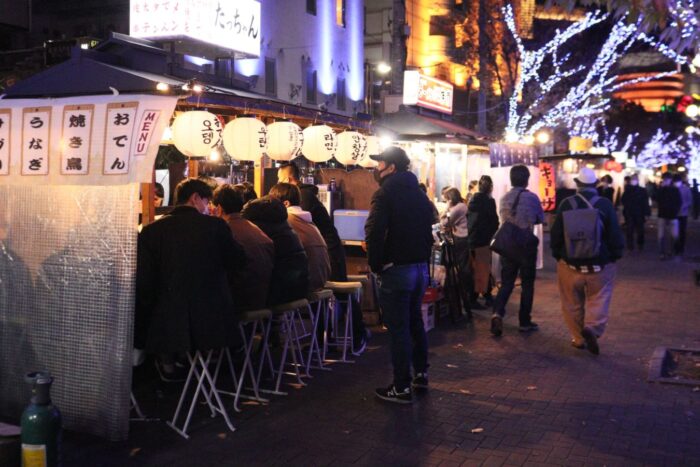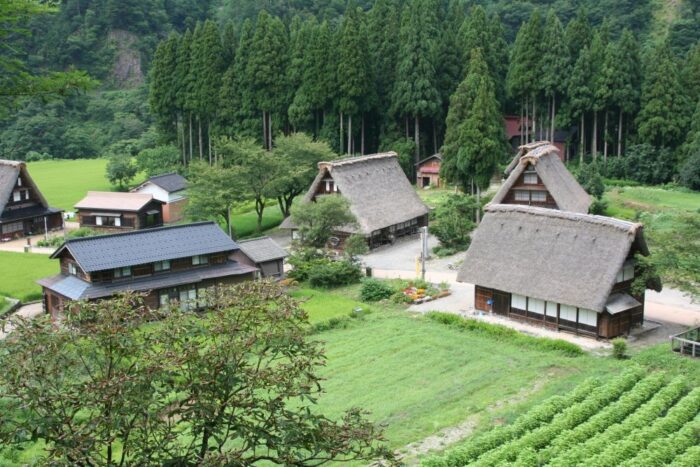The Double Ninth Festival, known as ChōYō No Sekku, takes place on September 9th at the Kamigamo Shrine in Kyoto.
This vibrant celebration holds immense significance in the Shinto religion, honoring the auspiciousness of the number nine.

The festival showcases Japan’s cultural heritage through the selection of a Saiō-dai princess, who dons a stunning kimono and represents the country’s rich traditions.
Balancing the energies of Yin and Yang, the festival incorporates captivating rituals and prayers.
Chrysanthemums, symbolizing youth and longevity, play a central role, adding beauty and meaning to the festivities.
Key Takeaways
- Chōyō no Sekku is celebrated on September 9th at Kamigamo Shrine in Kyoto, and it has been celebrated since the ninth century.
- The festival marks the transition between seasons and the autumn rice harvest, and it is considered auspicious in the Shinto religion.
- The festival showcases the cultural significance of the event through the representation of Saiō-dai, an imperial princess, and her young attendants.
- The rituals and prayers performed during Chōyō no Sekku aim to balance the Yin and Yang energies, with the festival representing the transformation of excess Yang energy.
Significance of ChōYō No Sekku and Kamigamo Shrine

The Kamigamo Shrine in Kyoto holds great significance in the celebration of Chōyō no Sekku. This festival is observed on September 9th and marks the transition between seasons and autumn rice harvest. Celebrated since the ninth century, it is deeply rooted in the Shinto religion and is considered auspicious due to the number nine being sacred.
On this day, the shrine hosts the Chrysanthemum Festival. People come together to celebrate the blooming autumnal flower. The festival showcases traditional dances, local traditions, and unique rituals performed by the shrine’s priests. One such ritual is a prayer dance that mimics crows, which are considered sacred in Shintoism.
Along With the prayer dance, children participate in crow sumo, a popular wrestling match. The Kamigamo Shrine’s rituals add intrigue and cultural significance to the festival, making it an event not to be missed.
Saiō-dai Princess Representation
Representing an imperial princess during the Aoi Matsuri, Saiō-dai wears a multi-layered kimono and classic hairstyle. This regal attire signifies her role as a symbol of Japan’s rich cultural heritage.
As she gracefully walks through the streets of Kyoto, young attendants accompany her, adding to the grandeur of the procession. The audience is captivated by her elegance and the intricate details of her kimono, which are meticulously crafted to showcase the beauty of the event.
To further evoke an emotional response, a three-column, three-row table is displayed, showcasing the cultural significance of Saiō-dai’s representation. Each column represents a different aspect: the role of Saiō-dai, the importance of the Aoi Matsuri, and the impact of the festival on preserving Japan’s traditions.
This table serves as a visual reminder of the profound significance of Saiō-dai’s representation and the cultural importance of the Aoi Matsuri.
Balancing Yin and Yang Through Rituals
Balancing the Yin and Yang energies, the rituals and prayers performed during Chōyō no Sekku transform the excess of Yang energy into auspiciousness.
In East Asian cultures, the balance of Yin and Yang is of great importance. Chōyō no Sekku represents the excess of Yang energy, which is associated with odd numbers. Through various rituals and prayers, this imbalance is transformed into auspiciousness.
The festival observes the transformation of this excess Yang energy, bringing harmony and balance to the world. People participate in these rituals with the belief that it will bring good fortune and prosperity.
Symbolism of Chrysanthemums

Symbolizing youth and longevity, chrysanthemums play a significant role in the cultural celebrations at Kamigamo Shrine. During the Chōyō no Sekku, also known as the Chrysanthemum Festival, the vibrant and delicate blooms take center stage, adorning the shrine grounds and captivating the visitors.
The chrysanthemum has long been seen as a symbol of longevity in Japanese culture, with its resilient nature and ability to withstand the changing seasons. People create elaborate displays and arrange chrysanthemum-themed activities to celebrate the blooming autumnal flower. Women even wear kimonos adorned with chrysanthemum designs, hoping to attract good fortune.
The chrysanthemum’s presence at Kamigamo Shrine adds beauty and meaning to the festival, reminding everyone of the importance of embracing youth and cherishing the ever-changing cycle of life.
Unique Rituals at Kamigamo Shrine
The priests at Kamigamo Shrine in Kyoto perform a prayer dance that mimics the graceful movements of crows, adding intrigue and cultural significance to the Chōyō no Sekku festival.
The dance, known as the Crow Dance, is believed to bring good fortune and ward off evil spirits. As the priests move in sync with the rhythm, their flowing robes resemble the wings of crows in flight.
This captivating performance captivates the audience, transporting them into a world where ancient legends come to life. The dancers’ precise movements and intricate choreography showcase the rich traditions of the shrine and its deep connection to nature.
The Crow Dance is just one of the many unique rituals that make the Chōyō no Sekku festival at Kamigamo Shrine a truly unforgettable experience.
The Celebration of Double Ninth Festival
During the celebration of the Double Ninth Festival, the people of Kamigamo Shrine gather to honor the auspiciousness of the number nine in the Shinto religion. This ancient festival, which has been celebrated since the ninth century, holds great significance for the community.
As the festival marks the transition between seasons and the autumn rice harvest, it is a time of gratitude and celebration. The Kamigamo Shrine is beautifully adorned with chrysanthemums, symbolizing youth and longevity.
The festival showcases unique rituals, such as the prayer dance performed by the shrine’s priests, mimicking crows. Crow sumo, a popular wrestling match among children, adds to the intrigue and cultural significance of the event.
The Double Ninth Festival at Kamigamo Shrine is a time for the community to come together, celebrate their traditions, and embrace the auspiciousness of the number nine.
Frequently Asked Questions
What Is the History of the ChōYō No Sekku Celebration at Kamigamo Shrine?
The Chōyō no Sekku celebration at Kamigamo Shrine has a rich history. It dates back to the ninth century and is held on September 9th. The festival marks the transition between seasons and the autumn rice harvest.
How Is the Saiō-Dai Princess Chosen to Represent the Aoi Matsuri Festival?
The Saiō-dai princess is chosen to represent the Aoi Matsuri festival based on her embodiment of imperial heritage. Wearing a multi-layered kimono and classic hairstyle, she is accompanied by young attendants, showcasing the cultural significance of the event.
What Are Some Specific Rituals and Prayers Performed During ChōYō No Sekku to Balance Yin and Yang Energies?
During Chōyō no Sekku, specific rituals and prayers are performed to balance Yin and Yang energies. These ancient practices aim to transform the excess of Yang energy into auspiciousness, symbolizing the festival’s significance in East Asian cultures.
What Other Cultural Symbols Are Associated With the Chrysanthemum Festival Besides Chrysanthemums Themselves?
Besides chrysanthemums, the Chrysanthemum Festival in Kyoto is associated with other cultural symbols. Women wear chrysanthemum-designed kimonos for good fortune, and people create displays and arrange chrysanthemum-themed activities to celebrate the blooming autumnal flower.
Can You Provide More Details About the Legend of Yatagarasu and Its Connection to the Sacredness of Crows at Kamigamo Shrine?
The legend of yatagarasu, a three-legged crow, connects to the sacredness of crows at Kamigamo Shrine. It represents divine guidance and is believed to bring good fortune. The shrine’s rituals honor this legend, adding cultural significance to the festival.
The Sum Up

To sum it up, the Double Ninth Festival, known as Chōyō no Sekku, is a captivating celebration of culture and tradition in Kyoto.
With its deep significance in Shinto religion, the festival brings together rituals, prayers, and the beauty of chrysanthemums to honor the transition between seasons and the autumn rice harvest.
The Kamigamo Shrine adds a unique touch with its princess representation and intriguing rituals like crow sumo wrestling.
Through this festival, the people of Kyoto not only celebrate but also preserve their rich cultural heritage for generations to come.




